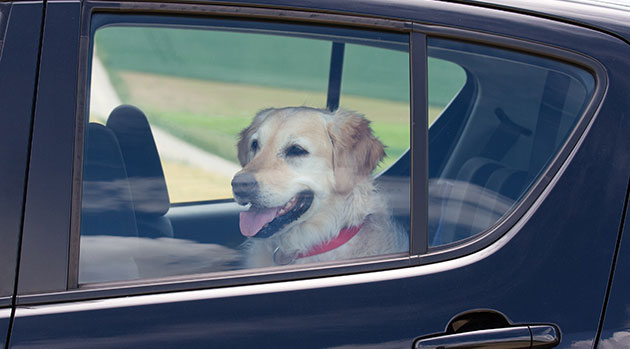From DMV.org by Bridget Clerkin

A vehicle's interior can warm rapidly and prove fatal to children and pets.
With its longer days and warmer air, summer is a seasonal favorite of many. But the same things that make this time of year so pleasant can also make it potentially dangerous.
The hottest months are here again and many children are at risk of losing their lives to vehicular heatstroke. Most tend to be infants.
The statistics are undoubtedly tragic, but sadly, they’re nothing new. Since 1998, hundreds of children age 14 and under have passed away from vehicular heatstroke. This is the leading auto-related killer of children outside of roadway accidents.
Children under 1 are the primary victims.
And that’s to say nothing of the thousands of animals that lose their lives each year inside a hot car.
But the heartbreaking situation is nothing if not preventable.
Below are some tips, tricks, and facts to help make this summer as safe as possible for your smallest passengers.
Heat Rising
One of the things that makes vehicular heatstroke so dangerous is how quickly it strikes.
In 10 minutes, the interior of a car can heat up by 19 degrees. And cracking a window doesn’t help.
In 10 minutes, the interior of a car can heat up by 19 degrees.
The issue arises from the rays of shortwave radiation beaming down from the sun. The solar energy is absorbed particularly well by dark-colored objects, such as a dashboard, steering wheel, or car seat, which can reach temperatures of up to 200 degrees from exposure to the rays.
The heat-absorbed objects then, in turn, emit longwave radiation, which works quickly and effectively at warming the air inside of a vehicle.
Children and animals are particularly at risk in the superheated environment as it takes far less to bring up their core temperatures.
Even in a vehicle parked in the shade, a 2-year-old’s body can reach a potentially fatal 104 degrees in under 2 hours, according to a recent study conducted by the University of Arizona. (Cars parked in the sun could become deadly in just one hour, the study found.)
And while vehicles with light-colored interiors take slightly longer to reach dangerous levels, they aren’t immune to the lethal effects, which can take place on days with a temperature as low as 57 degrees.
Still, a number of technological solutions are being developed to help combat the problem—and they’re becoming more widely available (go to DMV.org to learn more).
What Can You Do?
“ACT” Fast
Parents and caretakers everywhere can help prevent vehicular heatstroke by remembering to ACT. The mnemonic device was developed by several child advocacy groups to remind drivers to:
- A—Avoid leaving children alone in a car by any means. This includes locking the vehicle when it’s not being used to avoid a child getting inside on their own.
- C—Create reminders. Parents can leave a stuffed animal in the child’s car seat during times when it’s empty, then move the toy to the front seat when a child is riding in back as a visual reminder. Other tips include leaving a phone, briefcase, purse, or other highly-used object in the backseat while a child is in the car.
- T—Take action. If you see a child unattended in a car, call the police or 9-1-1. It could be the most important call you ever make.

